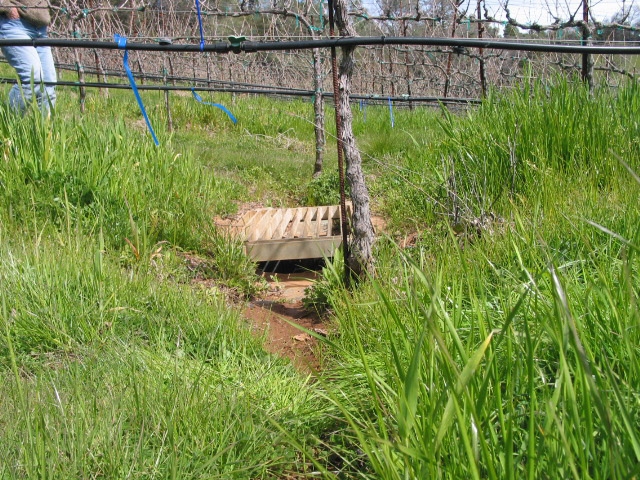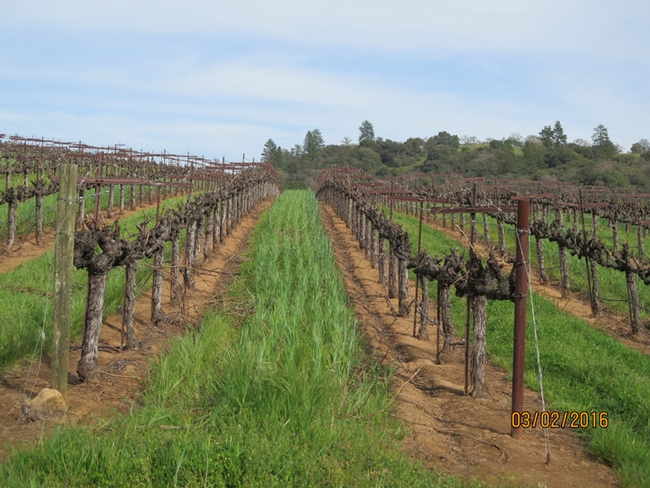Erosion of soil like this can be prevented!
1. Straw mulch. Straw mulch is a relatively simple way to hold your precious soil in place. Rice straw is particularly desirable because it has fewer weed seeds, but it is also high in silica which doesn't break down quickly and can actually tie up nitrogen. To remedy this, applications of nitrogen (no more than 1500 lbs. per acre, applied AFTER the rainy season) are recommended. Straw mulch is a simple way to hold soil in place.
Straw from upland grains (oats, barley and wheat) breaks down more quickly than rice straw but may contain noxious weed seeds. Make sure you know your source! Information on where to obtain weed free forage is available
here from the Cal-IPC (Invasive Plant Council) site. Seeding rate is 1500-3000 lbs./acre. See this
Straw Mulching Info. Sheet from
Napa County RCD.
2.
Straw Bale Wattles are a low-cost, effective way of diverting run-off; often used after fire.
3.
Diversions. Diversions require planning and construction-so take note of where you think an installation would be helpful. They can be used to break up concentrations of water runoff on long slopes, diverting it to a safe and stable outlet.
A pile of rocks in the right place!
4. Rock dam. Check dams can reduce the velocity of flow at the base of a slope.









